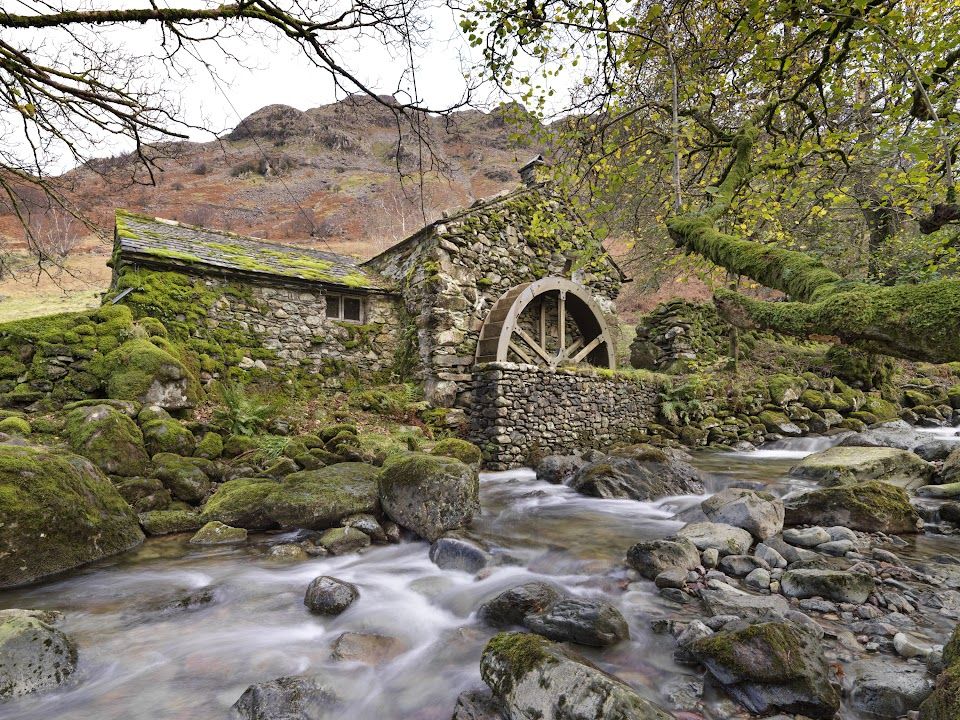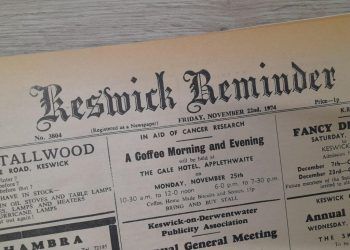
A Borrowdale watermill’s historic and architectural significance has been recognised and a north Lakes bobbin mill has become a scheduled monument in the new National Heritage List for England 2022.
The 18th century Coombe Gill Mill at Borrowdale, which was immortalised in a drawing by renowned landscape artist John Constable in 1806, has been given Grade II listed status. It means that it will now be subject to regulations which protect its unique character.
The rugged rubblestone and slate building, perched on the edge of Coombe Gill, a tributary of the River Derwent, was once used to mill corn for the local community.
Nestled in the lush scenery of the Lake District National Park, the mill became a source of inspiration for artists keen to capture its picturesque qualities.
The most famous was John Constable, who produced a pencil and watercolour drawing of the mill in 1806 while on a tour of the Lake District to expand his repertoire. This is now in an art gallery in California.
Although the internal milling machinery has long since disappeared, traces of it can still be seen in the fabric and shape of the building – including the original plinth that supported the milling equipment – and the attached corn drying kiln.
Meanwhile, the Howk Bobbin Mill, at Caldbeck, has been given scheduled monument status. It was built by local entrepreneur John Jennings in a natural limestone gorge, with waterfalls, and started production in 1857. It was one of the largest in the Lake District and at the height of its operation employed 60 men and boys.
Today it is one of the best surviving examples of a purpose-built bobbin mill in the country, with a range of buildings and machinery which show how the mill and production processes operated.
Bobbins are cylinders or spools for winding yarn, thread or wool and were a crucial component for the textile industry.
The Lake District powered the boom in the textile industry in the 19th century, thanks to its abundant natural resources: water for power and coppiced woodlands for the bobbins. Mills sprang up in the area and are thought to have accounted for 50 per cent of all bobbin production in Britain at the time.
As well as sewing cotton reels and spinning and threading bobbins, the Howk Bobbin Mill produced butter moulds, helves for picks and hammers and washing dollies. Goods were transported by horse and cart to Wigton railway station, and then as far afield as Ireland and India.
Twenty-six historic places in the North West have been added to the National Heritage List for England during the year and 240 across the country.
Trevor Mitchell, Historic England’s regional director north, said: “The variety of listings this year illustrates the rich diversity of our shared heritage and the importance of everyday places – from an Edwardian Bank to an 18th century watermill – that make up the fascinating fabric of our past.
“Places like this help to make us proud of where we live. As the challenges from the climate crisis grow, listing also helps to encourage keeping historic buildings in use, which avoids the massive amounts of extra carbon emissions associated with building new.
“In England, 99 per cent of us live less than a mile from a listed site and the festive season is a great time to find out more about the historic places on our doorsteps.
“This Christmas, we’re inviting everyone to help enrich the list, by sharing their knowledge and pictures of listed places to help expand our shared understanding and perhaps even unlock some of the secrets of the past.”








